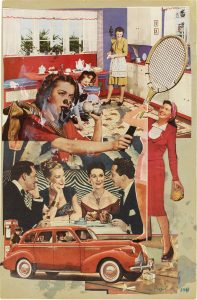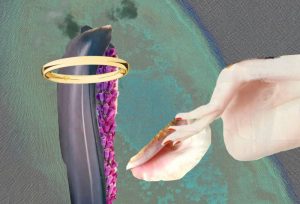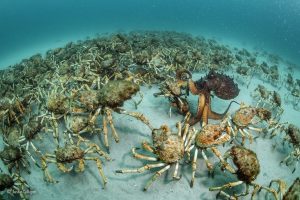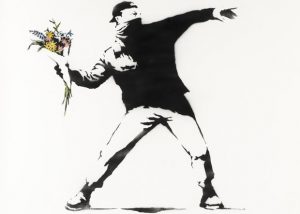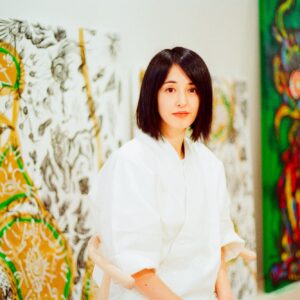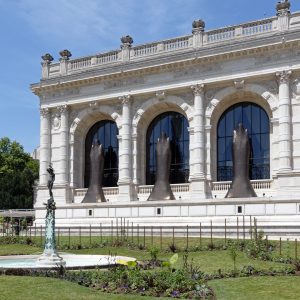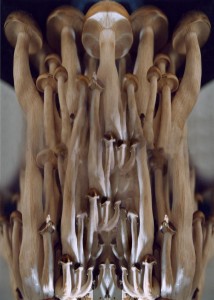
1. When did you start to make art?
I started making art from the age of 10 while I was in a Greek art school for a few years. I have always knew that art will be the most significant part of life. Progressively I entered the School of fine art at the Aristotle University of Thessaloniki where I studied BA hons for 5 years before I moved to London for an MA in Fine Art at Chelsea College of Art and Design in 2004.
2. How did you evolve into a professional artist?
I become involved in art through my collaboration with a Greek art gallery (Art Forum) exhibiting in various group shows during my BA studies and at that time I had been selected by acclaimed artist Jiannis Kounellis (professor at Düsseldorf school of art) to participate in a big curatorial project with 15 German Artists in 1997.
3. What drove you to make art as a professional vocation?
I’ve been driven into art making as professional vocation having been inspired by a generation of Greek artist including my professor and mentor Jiannis Fokas who had all studied in Paris during the 60’s and brought with them a real sense of European Avant garde along with experiences of an artistic lifestyle, which really appealed to me.
4. Explain your inspiration?
I am interested in how things come into being. I am Puzzled in identifying myself with the context I am living in and how I become attached to things. Mainly inspired by earthly everyday natural structures I find in vegetables and specimens, which I combine, with scientific information on cosmological phenomena. I am driven by a force to visually record, scrutinizing the observational specimens for their beauty, while the immensity of natural occurrences is reduced to a familiar scale formulating the microcosmic ‘banal’ reality to the macro-‘cosmic’ reality. In a way my work is formed as an experimental laboratory where the notion of interpretation and cultural construction is investigated in sensitive irony. In an incessant reference to allegory, which defines the significations of natural occurrences within everyday life, the artworks propose the deconstruction of our conceptual mechanisms.
5. In what way does your inspiration transform into ideas
By ignoring traditional hierarchies of display as well as re-creating imagery from books I re-contextualize groups of everyday objects, disrupting conventional readings, suggesting poetic ensembles ranging from the personal to the universal. This offers me freedom to suggest new narratives and relationships between the artifacts. In terms of how data is circulated in a number of institutions such as school, library, church, academia, gallery and museum.
6. From Ideas to production of art – how? And why?
My methodology evolves processes of observation, collection, manipulation and curation manifested through drawings, sculptures, photography and installation. I create sculptural series /installations and blackboard drawing series which re-examine the quasi-scientific and academic or museological knowledge expressed in books. In these poetical, ‘in favor of the real’ pictures or spaces, the objects appear to reveal the secret, unseen side of things, almost bringing unreasoned things some kind of meaning.
7. Could your ideas be portrayed in any other medium? If so which?
These mediums are the ones, which are personalized within the laboratory of the everyday, becoming aesthetical presentations.
8. Which artists would you most like to blatantly rip off?
True artists are not meant to ‘steal each other’s ideas. Historically speaking, great movements and art masters have been instrumental in inventing intellectual
Art forms which then have been provoked or form a dialectic and taken further by other artists. Post- modernism is the era, which has introduced the technique of ‘rip off’.
9. Why is your art made?
I create artworks acknowledging the fact that there is a crucial need for human exchange in questioning and challenging the institutionalized information and for finding alternative perceptual mechanisms in which to interpret reality.
10. What does being an artists mean to you?
Being an artist means someone who dives into nowhere and he survives. Someone who manages to elegantly create work that is both-remarkably self-critical and accessible.
11. Are you happy with your reasons for making art? i.e Are there any trade offs that make life hard?
This is an oxymoron. Art has always emphasized the trade offs, which exist in society. Art making is not about happiness, in my case it is about sustaining a curiosity in investigating certain areas of interest, which make human life hard as well as revealing a new code of communicating these problematic with the audience.
12. When does your art become successful?
Success is a word I would not use to describe an artwork. There have been enough significant moments in my artistic career where I felt extremely fulfilled by people’s responses and their various readings they make of my work. These have activated new feelings within them and created unique experienced moments in relation to their personal histories.
13. What is art?
Art is the ‘Aura’ that exists around an artwork.
14. How do you start the process of making work?
Usually there is a complex layering of emotions and ideas, which circulate in my mind for quite a while and are progressively reflected through visual language.
15. Who prices your work? And how is the price decided upon?
The art market is a considerable parameter in the price of an artwork. Prices are arranged in agreement with my gallerist. My experience in the art world –number of shows, MA art studies/ other qualifications I hold and the type of work (medium/ material costs) I exhibit in every one of my shows are all considered.
16. What is your next; move,project,show etc?
I am currently showing works as part of TIME exhibition at the Stephen Lawrence gallery and immersed in work intended for Cupboard Love 3.This is in collaboration with Jonas Ranson and organized by Sue Cohen. The project will take place at the Greenwich Foot tunnel and will run from November the 25th to the 2nd of January. I have enjoyed creating work, which will be viewed, in an open public setting. In this unique space the audience is invited to engage with physical and emotional events re-evaluating the urban ‘regeneration’.I am also preparing work for my solo show in collaboration with the Apartment gallery in Athens .For the Summer 2009 I am involved in a curatorial public project called ‘Area Codes’ exploring cultural identities within the areas of Woolwich-Greenwich-Deptford.
17. What are the pros and cons of the art market?
The Art Market is a monstrous hierarchical system involving curators, galleries, dealers, collectors and institutions, a place with many black holes and fancy faces in which the artist’s work is being valued autocratically. There is a sense of cannibalistic capitalism within this industry where ‘good’ artists need to prove their survival.
18. Which pieces would you like to be remembered for?
I think many artists I happened to met or read about, treat their work like they would a newborn child, and in this sense, there is always the romantic view towards the desire for a diachronic art making. The concept of originality, authorship and anonymity which underpins the modernist tradition is a visual element within my art practice, particularly at the mystique of my Secret School project in 2005.But I would definitely not believe that now days an artist has been guided by ‘Higher Powers’ to produce art.
19. Any routine in making your artwork? If so what?
Routine can come from experiencing the same emotional situation when you’ve been asked to make works which you have previously created and there is no need for you to make them again as the conceptual framework has already died. So far I have been lucky enough to be able to avoid that kind of commercial area.
20. What has been the biggest break in your career?
Certainly one of the most satisfying was my curatorial project ‘Who cares about Greek Art’ involving international London based artists and has been one of the starting points for the Athens Biennial. A more recent instance was last August in Amsterdam where I have been invited by Foolish People – London based theatrical group -to participate with my installation ‘Secret School’ in the international Meta: event ‘The end of the Earth’.
21. Who has been the biggest influence on you?
I have been influenced by a quite diverse range of artists. Amongst others I appreciate the works of German artist Sigmar Polke and Kippenberger as well as British artist John Latham and Keith Tyson and Paul Nash. I also find very inspirational the work of Goskha Macuga currently nominee at the Turner Price.
22. How many artworks have you given away and to whom?
I’ve been exhibiting works since 1997 and have been in private collections in Greece and Germany including, Alexandros Onassis foundation, Nikos Alexiou Collection, Beltios private Collection, Karathodoros private Collection, Theoharakis foundation, Macedonian Museum of Contemporary art, Griechische Kultustiftung collection.
